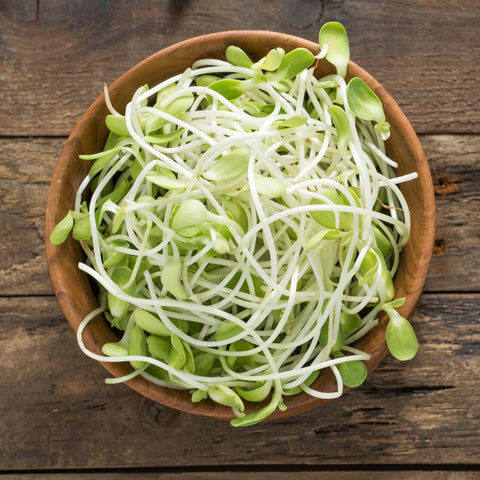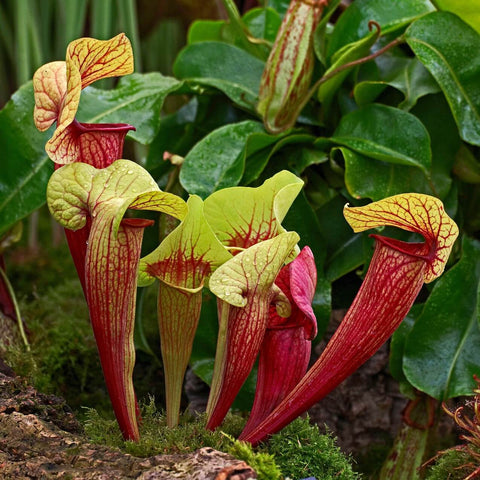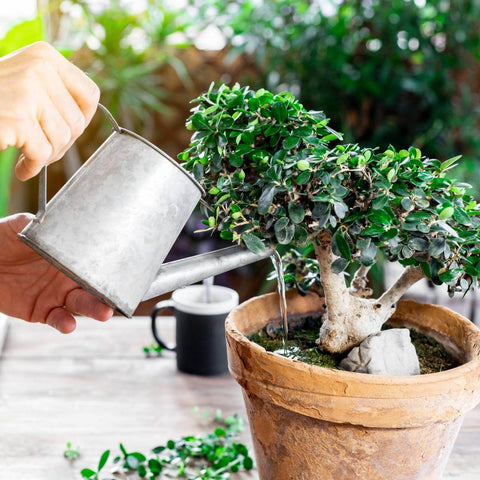A healthy meal with nutritious sprouts
In other words, seed germination can also be called indoor gardening, which does not depend on weather and other additional factors. It is a self-sufficiency that we do at home in the kitchen and for which we do not need much space. They are one of the rare types of food where from quality seeds in the shortest possible time, with very little effort, energy and tools, you can get quality nutritious food.
By eating sprouts, we will provide our body with high nutritional value , since the strength of the seed increases through germination.
Seed wealth
Seeds contain minerals, vitamins, proteins, fats and carbohydrates (starch) . When the seeds are exposed to the right temperature, air and moisture, chemical changes occur and the seeds germinate, releasing powerful energy. These shoots are called sprouts, which germinate only long enough for the cotyledons to develop from the seed. Sprouts are obtained from various types of seeds, the most suitable being: alfalfa, watercress, arugula, radish, mung beans and many other types.
How to use sprouts?
We can sprout different seeds and get different types of sprouts that enrich our food. Have fun with your children and try sprouting different types. Sprouts can be sprinkled on salads, soups, vegetable dishes, spreads, snacks. The imagination is yours.
Sprouts are best eaten in the winter, when there are not enough fresh vegetables and fruits. Even if we buy vegetables from the store, they have most likely been on the shelves for a long time and do not have high nutritional value. They are often frozen, losing their original value.
How do we prepare sprouts for germination?
We suggest trying a few different seeds to find what works for you. In the "Growing Pack" set you will find 2 mesh jars, alfalfa and mung bean seeds.
🌿 First soak the seeds in water by pouring them into a glass jar with a mesh screen.
🌿 Soak each type of seed separately in each jar.
🌿 Then pour off the water so that the seeds are only moistened.
🌿 Place both mesh jars in the refrigerator to allow the seeds to germinate for 1 to 3 days.
🌿 You must rinse the sprouts thoroughly with cold running water at least twice a day. Make sure to rinse long enough for the water to be clear (not cloudy).
🌿 Then pour off the water again so that the seeds are just soaked (they should not be standing in water).
🌿 After a few days, the sprouts will sprout, depending on the type of seed. Rinse them with water before using.
You can also store sprouts by draining the water and placing them in a sealed container in the refrigerator for just a few days. Use them as soon as possible or within 5 days at the latest.
Where to germinate?
Seeds can be placed in jars, bowls, trays, deep plates, or used in special multi-tiered sprouters or meshed jars.
Seeds that are not covered with mucus are germinated in jars. It is convenient to place the jars at an angle during germination, because the surface area of the germinated seeds is larger and more air and light reach them. Jars with a mesh lid are most useful.
Can anything go wrong?
Sprouts grow best at room temperature or in the refrigerator. Too high a temperature will overheat them and cause mold to develop, while too low a temperature can slow germination. Ventilation is also important here. If there is not enough ventilation, the germination area will become foggy and the sprouts will have an unpleasant odor. If the sprouts have a musty odor, this means that some of the seeds are rotten and are not suitable for consumption. Therefore, care in preparing the sprouts is of the utmost importance.
Storing sprouts
Sprouted seeds or sprouts are stored in a sealed container and must be used within 5 days. Always wash them before use, and only then enjoy the dish.
The sprouts can also be dried, ground, and used as a seasoning for dishes.
Regular consumption of sprouts will strengthen your body because they contain many nutrients. In addition, the preparation is very easy and quick. Enjoy your meal.




